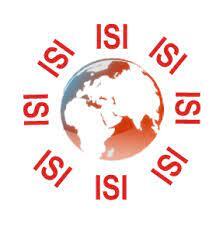Factors Affecting the HIV/AIDS Epidemic in Rwanda by Using DHS Data.
DOI:
https://doi.org/10.62103/unilak.eajst.9.9.107Keywords:
Factors, HIV/AIDS Epidemic, Rwanda, DHS DataAbstract
This research concentrates on HIV/AIDS as one of devastating epidemics around the world; but it emphasizes on the case of Rwanda where the use of Demographic Health Survey (DHS) data enable us to know its infection among individual background characteristics with the main objective of identifying its potential risk factor in Rwanda. To achieve this objective logistic regression model especially through odds ratio and chi-square distribution are used. Null and alternative hypotheses are investigated. The null hypothesis is that there is no association between HIV prevalence and individual background and alternative hypothesis is that there is association between HIV prevalence and individual background. Descriptive statistics was performed to determine the characteristics of the participants and univariate and multivariate logistic regression was used to determine the factors influence the uptake of HIV tests.
Among the total individuals tested for HIV/AIDS, 10241(96.7) were HIV/AIDS negative and 349(3.3) were HIV/AIDS positive, having place of residence, level of education, gender, province and age group as variables. The results shows that the p-values and the 95% confidence interval show that there is association between place of residence and region with HIV/AIDS. The obtained odd ratio(3.602 )for place of residence indicates that the probability of being infected by HIV/AIDS is 3.602 times more likely in urban areas compared to rural, and the obtained odds ratio for provinces are interpreted compared to Kigali and show that the odd of being infected by HIV/AIDS is 0.315 times less likely in north province and the probability of getting HIV/AIDS is 0.383 times less likely in southern province and the probability of getting HIV/AIDS is 0.317 times less likely in East province and the odds of infecting by HIV/AIDS is 0.474 times less likely in West province. In general, the most affected province is Kigali and the least affected is the Eastern province. For gender, level of education and age group factors their respective p-values (0.374;(0.372, 0.293, 0.088), 0.486) are greater than 0.05 at 5% level of significance which means that there is no association between these variables and HIV/AIDS. Hence, they are not factors. After analysis we conclude that the potential risk factors for HIV/AIDS in Rwanda are province and place of residence.








